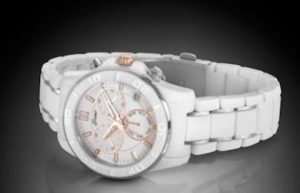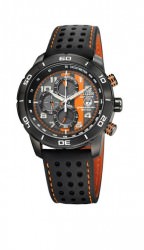Serving Time
 Effective merchandising techniques can help increase sales and profitability for your watch inventory. Display space is at a premium, so what you show and how you show it are critical. Key to successful merchandising is constant change, from tiny tweaks to major moves, to keep customers engaged.
Effective merchandising techniques can help increase sales and profitability for your watch inventory. Display space is at a premium, so what you show and how you show it are critical. Key to successful merchandising is constant change, from tiny tweaks to major moves, to keep customers engaged.
“When a shopper knows what to expect when she walks past a store, she has no incentive to wander in unless she needs what the store offers,” tells Pamela Danziger, president of Unity Marketing, Stevens, Pennsylvania. “But when she shops for fun, she’ll bypass the ordinary store in favor of one that offers a truly extraordinary experience.”
Danziger notes that shoppers don’t love a store because they love the merchandise they carry; they love it because it touches them personally and emotionally. Important merchandising characteristics encourage customers to touch, feel, and try on; exude energy and excitement; capture tangible and intangible elements; offer superior value at a  reasonable cost; and creates an environment that is free from pretensions and exclusivity.
reasonable cost; and creates an environment that is free from pretensions and exclusivity.
“Positioning and placement of watches within the store has become more important,” says Alan Grunwald, president of the private label watch company, Belair Time Corp. “Many retailers have realized that the way in which the watches are displayed is paramount to making sales.” One of his big pet peeves is an overcrowded showcase. “It’s overwhelming and confusing for customers,” he explains, “and it hurts the perception of the value of your goods.”
Make your displays easy to view, advises Meehna Goldstein, watch expert and stylist found on blogs.christies.com/longitude. Position display elements so every product easily seen. Step out from behind the showcase and see for yourself if it meets the attention, interest and desire criteria. Be creative. “I saw a lovely Audemars Piguet display with fresh flower nosegays,” she describes. “You don’t want to go overboard and get kitschy, but you can use details that reflect the image you want to portray, a certain level of service and care.”
 Special features and collections should be highlighted to enhance the consumer’s shopping experience and make it easier for them to find the perfect watch, suggests Tricia Norton, global chief marketing officer Bulova. “Understanding the consumer and what is important to them when selecting a watch is crucial in determining display methods and messaging used at point of sale. Feature key categories and collections in the center of the display. Throughout the showcase, also take into account grouping similar features, such as diamond dials and cases and balance the display overall.” She adds that in store merchandising is also adjusted according to the time of the year to fit holiday periods such as Mother’s Day or Father’s Day.
Special features and collections should be highlighted to enhance the consumer’s shopping experience and make it easier for them to find the perfect watch, suggests Tricia Norton, global chief marketing officer Bulova. “Understanding the consumer and what is important to them when selecting a watch is crucial in determining display methods and messaging used at point of sale. Feature key categories and collections in the center of the display. Throughout the showcase, also take into account grouping similar features, such as diamond dials and cases and balance the display overall.” She adds that in store merchandising is also adjusted according to the time of the year to fit holiday periods such as Mother’s Day or Father’s Day.
Moreover, watches are being mixed with jewelry styles that share similar attributes, says trends trackers, like gold watches with gold jewelry, sporty styles with fashion pieces containing material like rubber, leather and wood or steel. Present watches with jewelry as a stylist would in a way that tells a story.
Perhaps most important is to know your audience. “Cater to your local market, pay attention to what people want, but always look for new customers with new lines,” advises Roberta Naas, veteran watch journalist and founder of timelyperspective.com. This includes understanding their buying habits so that products are effectively positioned in your store.
Equally as important is to know what you are selling. “People get turned off if you don’t know the product you are selling, especially when they come in having researched it on the Internet,” says Naas, who also advocates wearing what you sell. “The biggest part of the store experience is in the customer service, the expertise and relationships. Customers pay more to work with people they trust.”










